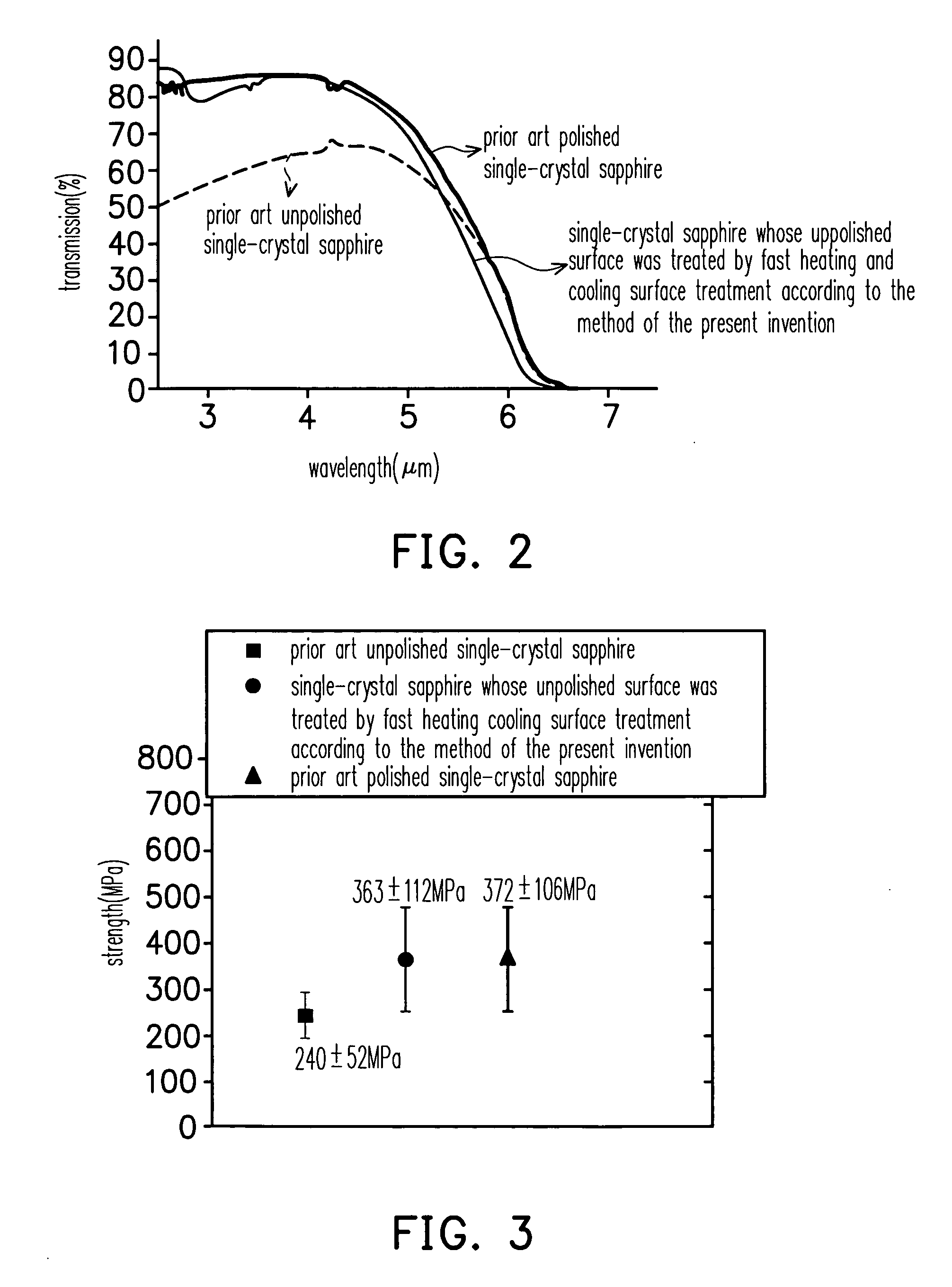Transparent ceramic structure and surface treatment method of the same
a technology of transparent ceramics and ceramic materials, applied in the direction of crystal growth process, natural mineral layered products, polycrystalline material growth, etc., can solve the problems of high manufacturing cost, long process time, and inability to penetrate light through ceramic materials, so as to reduce manufacturing costs and process time, improve the transparency of ceramic structures, and fast heat and cool
- Summary
- Abstract
- Description
- Claims
- Application Information
AI Technical Summary
Benefits of technology
Problems solved by technology
Method used
Image
Examples
Embodiment Construction
[0017] Generally, the method for improving the transparence of the ceramic material is a by mechanical polishing. The mechanical polishing, however, is time-consuming and costly.
[0018] The present invention applies a layer of glass material over the unpolished surface of the intrinsically transparent ceramic structure and treats the surface of the ceramic structure so as to obtain the desired transparency of the ceramic structure. Following are the descriptions of a method of surface treatment for a transparent ceramic structure according to an embodiment of the present invention.
[0019] The method first applies a glass powder over the unpolished surface of the intrinsically transparent ceramic structure, wherein the ceramic structure can be single crystal sapphire, silicon carbide, Nd:YAG or Al2O3-spinel, and the glass powder can be a material such as germanate glass, arsenic sulfide (As2S3), germania silica glass, Ge-As-Se glass or calcium aluminate glass. The glass-covered ceram...
PUM
| Property | Measurement | Unit |
|---|---|---|
| melting temperature | aaaaa | aaaaa |
| temperature | aaaaa | aaaaa |
| transparent | aaaaa | aaaaa |
Abstract
Description
Claims
Application Information
 Login to View More
Login to View More - R&D
- Intellectual Property
- Life Sciences
- Materials
- Tech Scout
- Unparalleled Data Quality
- Higher Quality Content
- 60% Fewer Hallucinations
Browse by: Latest US Patents, China's latest patents, Technical Efficacy Thesaurus, Application Domain, Technology Topic, Popular Technical Reports.
© 2025 PatSnap. All rights reserved.Legal|Privacy policy|Modern Slavery Act Transparency Statement|Sitemap|About US| Contact US: help@patsnap.com



